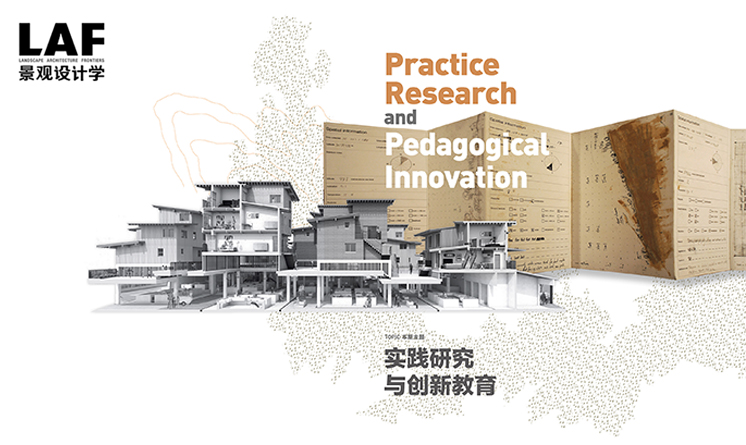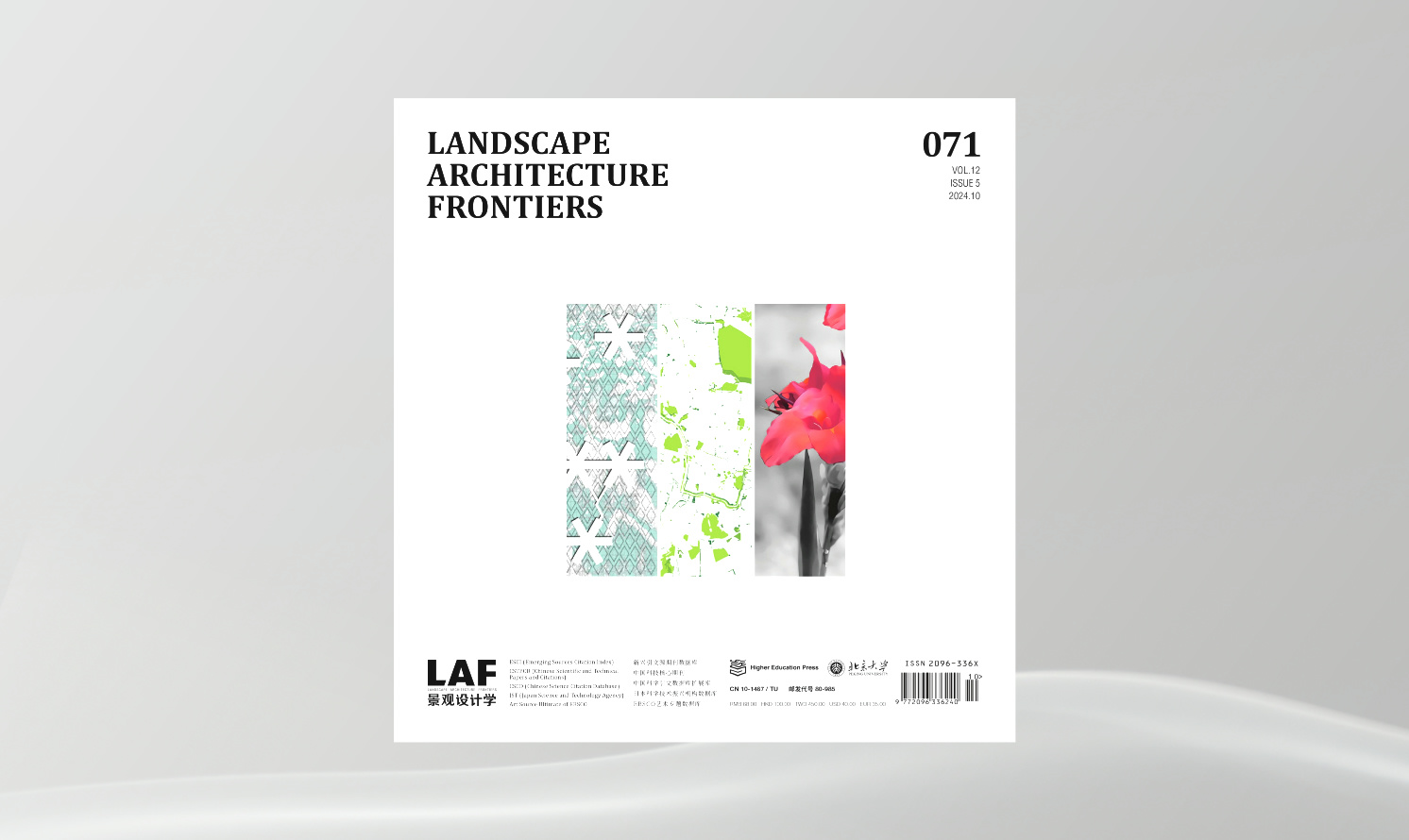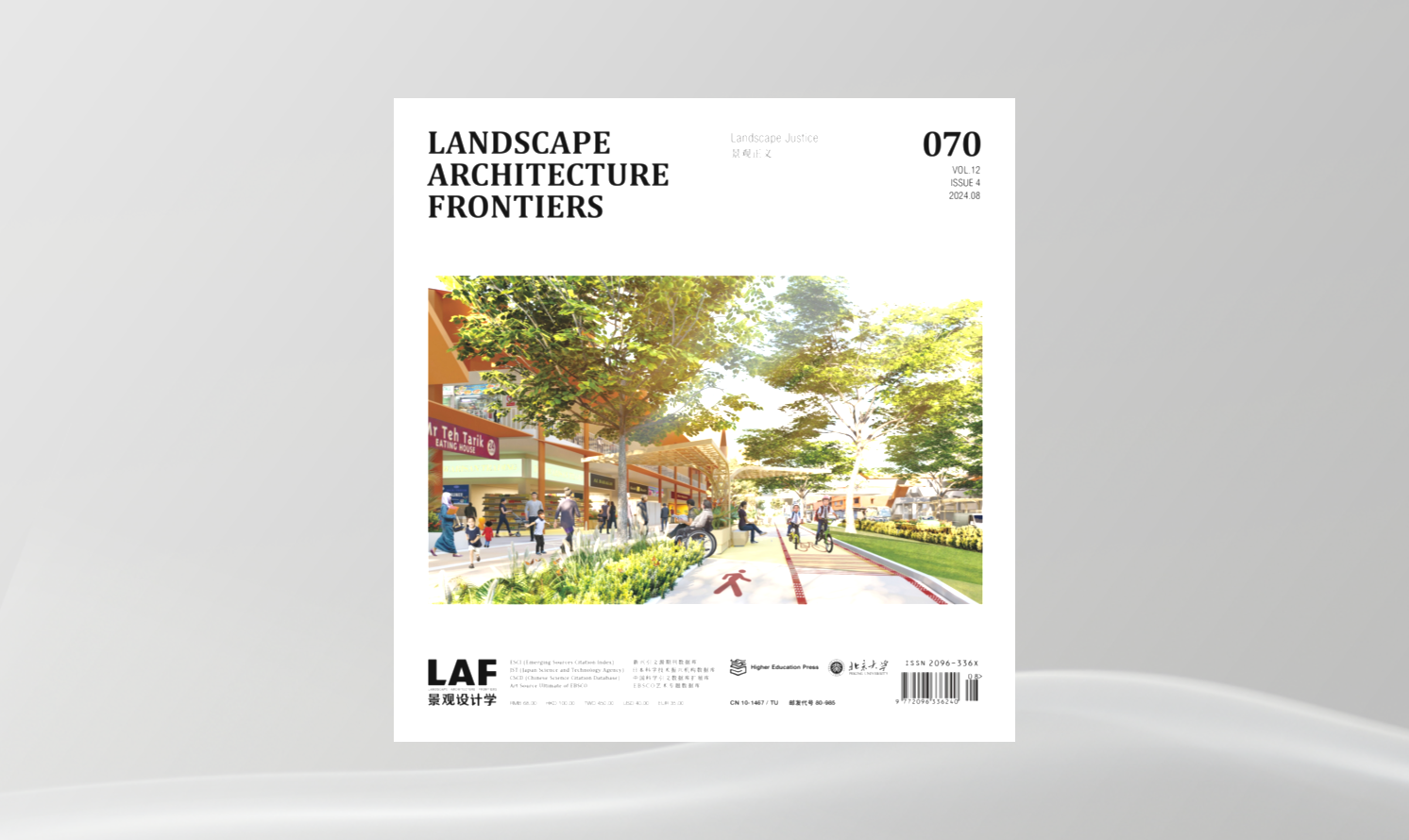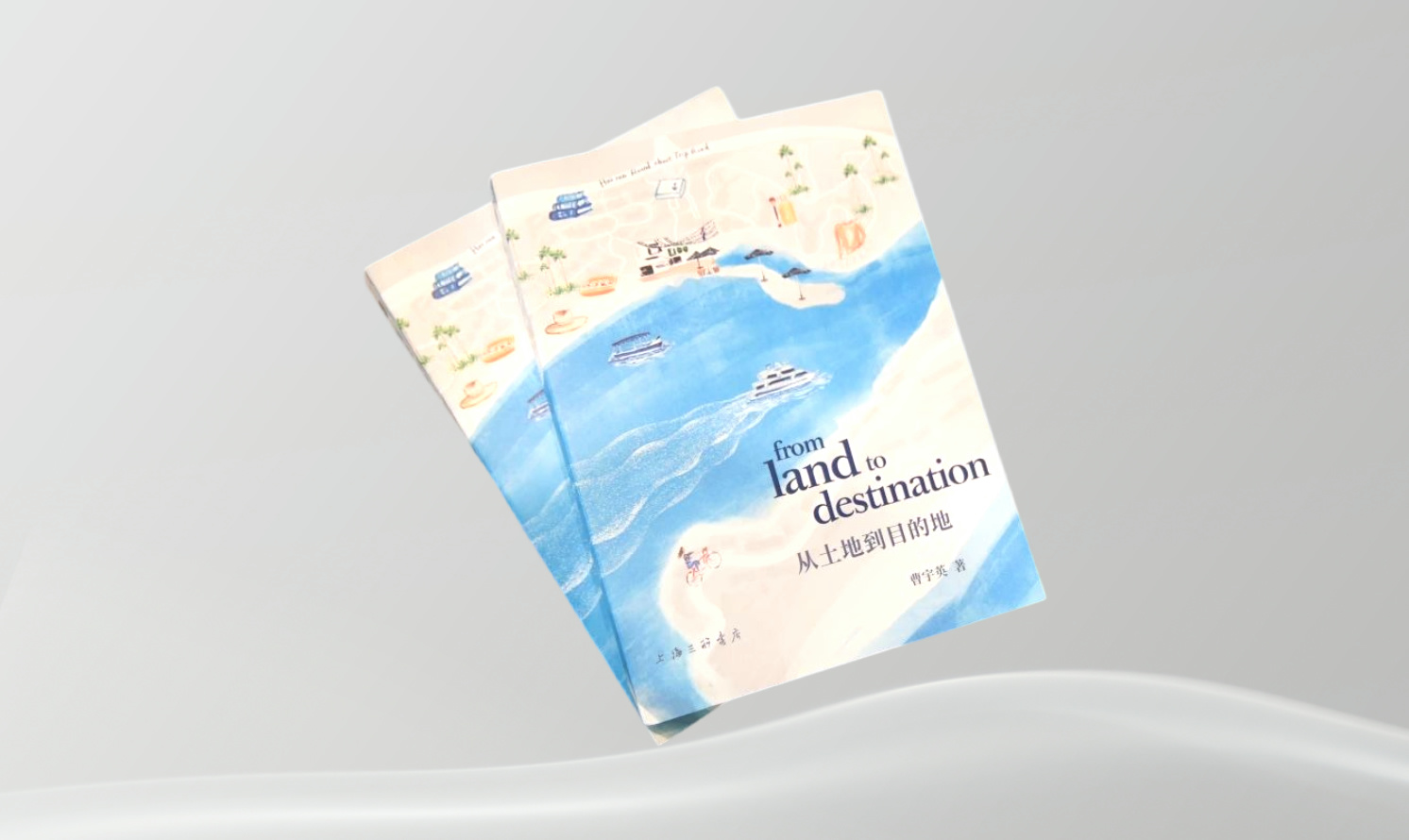韌性都市主義中的生態(tài)設(shè)計(jì)
Designing Ecologies for Resilient Urbanisms
作者:布魯諾·德·繆德爾�,凱利·香農(nóng) Bruno De MEULDER, Kelly SHANNON
摘要
本文對(duì)比利時(shí)魯汶大學(xué)基于實(shí)踐的都市主義研究團(tuán)隊(duì)—都市主義與建筑研究小組近期的一系列研究進(jìn)行了介紹。隨著當(dāng)代社會(huì)�����、生態(tài)��、空間不平等問題愈加突出�,都市主義與建筑研究小組試圖通過設(shè)計(jì)來塑造富有活力的生態(tài)環(huán)境��,營(yíng)建韌性城市���。他們的研究與實(shí)踐項(xiàng)目遍布全球,主要從三個(gè)角度探討了場(chǎng)地問題:水都市主義�����;森林都市主義�;塑造擁有抗性的全新社會(huì)生態(tài)。文章的第一部分結(jié)合案例闡述了都市主義與建筑研究小組的設(shè)計(jì)理念��;第二部分以概要的形式對(duì)4個(gè)近期正在進(jìn)行中的設(shè)計(jì)研究項(xiàng)目予以介紹���。
關(guān)鍵詞
都市主義與建筑研究小組;實(shí)踐型設(shè)計(jì)研究�����;水都市主義���;森林都市主義����;社會(huì)生態(tài);抗性
Abstract
This article encapsulates the recent work of OSA, a practice-based urbanism situated in an academic environment (KU Leuven, Belgium). In the contemporary era of increased social, ecological, and spatial injustices, OSA’s work attempts to create resilient urbanisms through designing robust ecologies. Its worldwide sites of research and interventions are primarily addressed through three themes: water urbanisms, forest urbanisms, and creating new social ecologies as resistance. The first part of the article provides an overview of the ambitions of OSA with a number of examples. The second component consists of four excerpts of recent and on-going design research.
Key words
Onderzoeksgroep Stedenbouw en Architectuur; Practice-Based Design Research; Water Urbanisms; Forest Urbanisms; Social Ecologies; Resistance
身體與體驗(yàn)——以場(chǎng)地為核心的景觀基礎(chǔ)教學(xué)
Body-Scale Perception and Experience: A Terrain-Based Foundation Studio of Landscape Architecture
作者:曾穎 ZENG Ying
摘要
以繪畫為核心的傳統(tǒng)建筑學(xué)教育深深影響了環(huán)境藝術(shù)����、景觀設(shè)計(jì)等新興設(shè)計(jì)學(xué)科的基礎(chǔ)課程的教學(xué)方式。然而�����,對(duì)景觀設(shè)計(jì)學(xué)來說�����,直接借鑒以建筑學(xué)為母體的基礎(chǔ)課程是否合適�����?是否還有其他方法可用于引領(lǐng)景觀學(xué)科的基礎(chǔ)教學(xué)�����?在本文中�����,筆者以自身在中國美術(shù)學(xué)院建筑藝術(shù)學(xué)院景觀設(shè)計(jì)系進(jìn)行的以場(chǎng)地為核心的景觀基礎(chǔ)課程教學(xué)實(shí)驗(yàn)為例����,介紹了通過場(chǎng)地初識(shí)�、熟悉�����、探索和演變4個(gè)步驟進(jìn)行場(chǎng)地設(shè)計(jì)的方法�����,希望為中國當(dāng)前的景觀設(shè)計(jì)教育與實(shí)踐提供借鑒����。在該課程中,筆者尤其強(qiáng)調(diào)從多重感知角度體驗(yàn)景觀�,并注重探究事物本質(zhì)以及事物之間的聯(lián)系與共性。
關(guān)鍵詞
景觀設(shè)計(jì)學(xué)���;場(chǎng)地;體驗(yàn)��;身體���;教學(xué)法
Abstract
Traditional design education and training in china, including Environmental Art and Landscape Architecture, is essentially grafted from methods of architectural painting. The time has come to reexamine and reflect that is it appropriate to borrow teaching methods directly from Architecture and are there other methods that are developed from the intrinsic qualities of Landscape Architecture and can be used for disciplinary teaching? This article introduces a set of methods of terrain based field investigation and site documentation, including outlining, mapping, representation, and intervention, which were developed by the author for a design studio in the Department of Landscape Architecture, School of Architecture at the China Academy of Art. The perception of landscape through multiple senses and the exploration on the unseen causes of appearance, as well as the relationships and connections within the terrain, are emphasized in such training.
Key words
Landscape Architecture; Terrain; Experience; Body; Pedagogy
綜合教學(xué)與實(shí)踐:綠色基礎(chǔ)設(shè)施規(guī)劃和綠色屋頂績(jī)效在美國半干旱校園環(huán)境中的應(yīng)用
Integrated Teaching and Practice: Green Infrastructure Planning and Green Roof Performance in a Semi-Arid Campus Environment, USA
作者:楊波�,南希·曼斯尼爾���,麥克肯納·德魯��,大衛(wèi)·杜非 YANG Bo, Nancy MESNER, McKenna DREW, David DURFEE
摘要
本文介紹了一個(gè)鼓勵(lì)校園內(nèi)外利益相關(guān)者廣泛參與的綜合性教育和研究計(jì)劃�。這個(gè)設(shè)計(jì)方案旨在加強(qiáng)人們對(duì)于水的關(guān)注���,推動(dòng)了位于美國西部半干旱山區(qū)的猶他州立大學(xué)校園內(nèi)實(shí)現(xiàn)有效的雨水管理�。猶他州已經(jīng)采用各種各樣的“綠色”雨水管理措施�����,例如�,大部分校園中的徑流被用于補(bǔ)給地下水。然而�����,這其中并沒有哪個(gè)方案全面地展示出可持續(xù)實(shí)踐的內(nèi)容����,且極少對(duì)設(shè)計(jì)績(jī)效進(jìn)行定量評(píng)估。根據(jù)2011年制定的《猶他州立大學(xué)校園總體規(guī)劃》及《校園可持續(xù)發(fā)展規(guī)劃(2013-2020)》,本文提出了一系列以雨水為資源的綠色基礎(chǔ)設(shè)施策略來彌補(bǔ)上述空白����,并制定了校園實(shí)施計(jì)劃的三個(gè)階段。其中第一階段總體規(guī)劃包括一個(gè)建成的綠色屋頂項(xiàng)目�����,研究對(duì)該綠色屋頂表面與作為實(shí)驗(yàn)參照的相鄰瀝青屋頂在削減雨水徑流和降低溫度方面的績(jī)效數(shù)據(jù)予以了記錄���??偠灾?��,本研究提供了一種整體性的綠色基礎(chǔ)設(shè)施設(shè)計(jì)方法����,不僅為目前相關(guān)研究較少的半干旱氣候地區(qū)貢獻(xiàn)了綠色基礎(chǔ)設(shè)施績(jī)效評(píng)價(jià)數(shù)據(jù)��,其本身也成為了一個(gè)在設(shè)計(jì)過程中進(jìn)行研究的案例����。
關(guān)鍵詞
氣候適應(yīng)性;猶他州�;綠色基礎(chǔ)設(shè)施;雨水管理�����;教育體驗(yàn)���;教學(xué)創(chuàng)新
Abstract
This paper presents an integrated education and research program that involves extensive participation from stakeholders on campus and beyond. The resultant water conscious design proposal promotes efficient stormwater management on Utah State University’s campus, situated in the semi-arid Intermountain West. Utah State has adopted various “green” solutions for stormwater management, such as directing most campus runoff to recharge groundwater. Yet, there is no comprehensive plan that lays out its sustainable practices, and little quantitative assessment of the design performance has been performed. In accord with the University campus Master Plan of 2011 and campus Sustainability Plan 2013-2020, this paper addresses this gap and proposes a series of green infrastructure strategies that make use of rain as a resource, and that can be implemented across campus in three phases. A built green roof project is part of the Phase I master plan. Pilot performance data are presented regarding stormwater runoff and temperature reduction on a green roof surface versus an adjacent test-bed asphalt roof. In summary, the paper provides a holistic approach toward adopting green infrastructure designs and assessing green infrastructure performance in the less evaluated semi-arid climatic conditions, and it serves as an example of research through design process.
Key words
Climate Resilience; Utah; Green Infrastructure; Stormwater Management; Educational Experience; Pedagogical Innovation
對(duì)教育及研究中的實(shí)用主義的反思
A Reflective Practitioner’s View of Teaching and Pragmatism in Research
作者:弗雷德里克·斯坦納 Frederick STEINER
摘要
在本文中��,受訪者弗雷德里克·斯坦納首先介紹了賓夕法尼亞大學(xué)設(shè)計(jì)學(xué)院的景觀設(shè)計(jì)教學(xué)體系�、優(yōu)勢(shì)與創(chuàng)新之處��,并立足于其多年的教學(xué)及實(shí)踐經(jīng)驗(yàn)闡釋了研究��、教育與實(shí)踐的關(guān)系����,以及對(duì)于景觀設(shè)計(jì)教育應(yīng)如何隨時(shí)代發(fā)展而改變的建議。斯坦納表示���,無論是其一直致力于推廣的“場(chǎng)地可持續(xù)性設(shè)計(jì)行動(dòng)計(jì)劃”評(píng)級(jí)體系����,還是新近出版的書籍《如何制定規(guī)劃》�,均可推動(dòng)學(xué)生及從業(yè)者理解專業(yè)知識(shí)�����,亦可起到一定的公眾教育效用��。最后���,斯坦納還指出,景觀設(shè)計(jì)師未來應(yīng)關(guān)注景觀設(shè)計(jì)在城市中的作用����、氣候變化及易受災(zāi)人群的庇護(hù)等議題,并強(qiáng)調(diào)了具備長(zhǎng)遠(yuǎn)目光和考慮時(shí)間對(duì)設(shè)計(jì)的影響的重要性�����。
關(guān)鍵詞
景觀設(shè)計(jì)教育�����;課程體系�����;實(shí)踐�����;研究;從業(yè)者
Abstract
In this article, Frederick Steiner, the interviewee, introduced the teaching system of PennDesign and its strengths and innovations, and explained the relationship between research, education, and practice based on his rich teaching and practice experience. He also gave suggestions about how to optimize the Landscape Architecture education and curriculum to keep up with the changing world. Steiner indicated that both the Sustainable SITES Initiative which he has made great efforts on and his latest book Making Plans can contribute to the professional training and public education. When it came to significant issues or promising topics that Landscape Architecture professionals need to pay more attention on the future, Steiner called for focus on the role of Landscape Architecture in the city, and climate changes and settlements to vulnerable populations, and highlighted the importance of taking a long view and designing with time.
Key words
Landscape Architecture Education; Curriculum; Practice; Research; Practitioner
圖示景觀設(shè)計(jì)實(shí)踐與現(xiàn)代科研的錯(cuò)位與解決途徑
Bridging the Gaps between Landscape Design Practice and Scientific Research: A Graphical Interpretation
作者:王志芳 WANG Zhifang
摘要
景觀規(guī)劃設(shè)計(jì)從業(yè)人員似乎并不會(huì)利用其他領(lǐng)域已有的知識(shí)與科研成果�����,同時(shí)����,他們開展的研究往往直接涉及其他學(xué)科領(lǐng)域���,但其成果卻無法和相關(guān)領(lǐng)域的科研人員競(jìng)爭(zhēng)�����。造成這一現(xiàn)象的核心原因是景觀規(guī)劃設(shè)計(jì)實(shí)踐與現(xiàn)代科研的錯(cuò)位��,即“整體與解構(gòu)”“要素與功能”以及“圖示與文字”的差異��。本文提出了解決這些錯(cuò)位的兩種重要的途徑與方法����,包括發(fā)現(xiàn)與分析問題以及歸納與圖示化科研成果��。
關(guān)鍵詞
科研實(shí)踐界面;規(guī)劃設(shè)計(jì)���;實(shí)踐研究��;錯(cuò)位
Abstract
Practitioners in the fields of landscape planning and design seem less taking advantage of, or even paying no attention to, existing findings of scientific research in other disciplines; and, they often conduct so-called “transdisciplinary” study on their own, but most of the outcomes are uncompetitive with those proven research findings in relevant fields. The author believed that it is essentially resulted from several dislocations between landscape practice and modern scientific research, that are, the gaps between holism and deconstruction, elements and functions, as well as graphics and texts. To bridge such gaps, this article puts forward two solutions: one is problem-finding and -addressing, and the other is synthesizing and visualization of research results, particularly through graphical interpretation.
Key words
Interface between Research and Practice; Planning and Design; Practice Research; Dislocation
以實(shí)踐為導(dǎo)向的建筑設(shè)計(jì)教學(xué)思考—同濟(jì)大學(xué)“小菜場(chǎng)上的家”系列建筑設(shè)計(jì)實(shí)驗(yàn)課
Reflections on Practice-Oriented Architectural Design Teaching — The CAUP Special Program “Home Above Market” at Tongji University
作者:王方戟 WANG Fangji
摘要
本次訪談圍繞同濟(jì)大學(xué)建筑與城市規(guī)劃學(xué)院“小菜場(chǎng)上的家”建筑設(shè)計(jì)實(shí)驗(yàn)課展開��。從2012年開始�����,同濟(jì)大學(xué)實(shí)驗(yàn)班以“小菜場(chǎng)上的家”作為三年級(jí)建筑設(shè)計(jì)教學(xué)的一個(gè)重要課題��,進(jìn)行了多專業(yè)����、長(zhǎng)周期等特色的設(shè)計(jì)教學(xué)創(chuàng)新嘗試�����,并出版了系列教學(xué)紀(jì)錄與反思書籍《小菜場(chǎng)上的家》��。本次采訪的受訪人王方戟作為教學(xué)主要負(fù)責(zé)人和書籍主要作者�,在中國建筑學(xué)界以特色設(shè)計(jì)教學(xué)著稱。作為一種教學(xué)探索����,王方戟認(rèn)為�,該課程意在讓學(xué)生關(guān)注那些以往被建筑學(xué)教育所忽略的平淡無奇的城市和社會(huì)環(huán)境��,從解決今天的問題開始����,探索未來中國城市建筑演進(jìn)��。
關(guān)鍵詞
菜場(chǎng)����;建筑學(xué);設(shè)計(jì)教學(xué)�;教學(xué)創(chuàng)新;同濟(jì)大學(xué)
Abstract
This interview centers in an architectural design program titled “Home Above Market,” which is one of the special programs of the College of Architecture and Urban Planning at Tongji University for junior experimental classes since 2012. As an innovative teaching practice that combines multiple specialties and spans a long-time period, this program reflects and accumulates its knowledge and experience through a documentary book series. Wang Fangji, the interviewee, is the teaching director of the Home Above Market program and the leading author of the book series, who also enjoys a high reputation in China’s architectural design education. He points out that this program aims at encouraging students to observe and care about ordinary urban and social environment that is often neglected in current architectural education. He further argues that problem-finding and -addressing capability training is important to architectural students, which would help stimulate a more vibrant exploration of China’s urban architecture.
Key words
Local Market; Architecture; Design Teaching; Pedagogical Innovation; Tongji University
中國設(shè)計(jì)教育探索:從課堂到工作坊
Thoughts on Design Education in China: From Classroom to Workshop
作者:何志森����,李迪華,劉悅來��,汪原 Jason HO, LI Dihua, LIU Yuelai, WANG Yuan
摘要
作為2018全國學(xué)生校園營(yíng)造聯(lián)盟暑期Mapping&Making工作坊的特邀指導(dǎo)教師���,北京大學(xué)李迪華�����、Mapping工作坊創(chuàng)始人何志森�����、同濟(jì)大學(xué)劉悅來和華中科技大學(xué)汪原嘗試為中國傳統(tǒng)設(shè)計(jì)教學(xué)模式注入新的思路�����。在訪談中�����,4位老師表達(dá)了自己對(duì)目前中國設(shè)計(jì)學(xué)科的教育體制和教學(xué)環(huán)境的看法��。他們一致認(rèn)為����,中國設(shè)計(jì)教育已經(jīng)面臨著現(xiàn)實(shí)危機(jī),不論是高校教師還是學(xué)生都需要意識(shí)到改變的迫切性���;目前設(shè)計(jì)教育改良尚未得到足夠重視���,學(xué)校間����、教師間對(duì)于教育意義����、教育未來的討論尚未建立。他們?cè)噲D以工作坊教學(xué)為契機(jī)��,讓高校師生們看到設(shè)計(jì)教育的更多可能���,同時(shí)培養(yǎng)學(xué)生的觀察力、探索欲��、好奇心��、自信心和獨(dú)立思考及實(shí)證能力��。
關(guān)鍵詞
設(shè)計(jì)教育�;教育危機(jī);啟蒙�����;教學(xué)法���;批判
Abstract
Li Dihua from Peking University, Jason Ho, Founder of the Mapping Workshop, Liu Yulai from Tongji University, and Wang Yuan from Huazhong University of Science and Technology were guest instructors at the 2018 Mapping & Making Summer Workshop of National College Student Campus Building Alliance. They each work on bringing new ideas to traditional design education. In this interview they shared their opinions on current design education and teaching in China. They believe that design education in China is currently at a point of crisis where both instructors and students need to be aware of the urgency to change. However, little attention has been given to the improvement of design education, nor has a discourse to explore a future direction been built. The interviewees approached the workshop as an opportunity for students and educators to see new possibilities in design education. Meanwhile, they hope to develop students’ curiosity and confidence in observation, exploration, independent thinking, and evidential design.
Key words
Design Education; Educational Crisis; Enlightenment; Pedagogy; Criticism
從《圖解景觀生態(tài)規(guī)劃設(shè)計(jì)原理》看景觀生態(tài)規(guī)劃設(shè)計(jì)教學(xué)中原理與實(shí)踐的轉(zhuǎn)化
Teaching Exploration on Bridging Theories with Practice of Landscape Ecological Planning and Design: Illustrated Principles of Landscape Ecological Planning and Design
作者:岳邦瑞�,費(fèi)凡YUE Bangrui, FEI Fan
摘要
本文圍繞《圖解景觀生態(tài)規(guī)劃設(shè)計(jì)原理》一書的內(nèi)容體系,闡述了作者對(duì)于景觀生態(tài)規(guī)劃設(shè)計(jì)的理論��、教學(xué)與實(shí)踐體系的思考�。本文首先就將生態(tài)學(xué)(及其相關(guān)學(xué)科)基本原理應(yīng)用于景觀生態(tài)規(guī)劃設(shè)計(jì)的研究、教學(xué)與實(shí)踐方法進(jìn)行了探索����;隨后提出了一個(gè)將理論研究與規(guī)劃設(shè)計(jì)實(shí)踐相橋接的多層次研究體系(包括基礎(chǔ)理論研究、應(yīng)用基礎(chǔ)研究和實(shí)踐應(yīng)用研究)�����;最后���,基于上述景觀生態(tài)規(guī)劃設(shè)計(jì)體系建立了以空間導(dǎo)則為核心的T-P-C途徑(即原理-空間格局/空間導(dǎo)則-實(shí)踐案例)�,并將其作為從生態(tài)學(xué)原理到規(guī)劃設(shè)計(jì)實(shí)踐的普適性操作程序�����?�;趯?duì)書籍用戶的抽樣調(diào)查,本文進(jìn)一步修訂和深化了景觀生態(tài)規(guī)劃設(shè)計(jì)研究體系�。
關(guān)鍵詞
風(fēng)景園林學(xué);生態(tài)學(xué)�����;規(guī)劃設(shè)計(jì)��;景觀生態(tài)學(xué)
Abstract
By reviewing the structure of the book Illustrated Principles of Landscape Ecological Planning and Design, this article reexamines the relationship between theoretical study, teaching, and practice in landscape ecological planning and design. It first explores how to apply the principles of ecological sciences (and other relevant disciplines) into related research, teaching, and practice of landscape ecological planning and design. The authors put forward a multi-level research system that integrates fundamental theories, application bases, and practice, in order to bridge ecological principles with planning and design practice. In addition, based on this landscape ecological planning and design system, the authors developed a T-P-C Approach, a universal operating procedure that links up Theories, Patterns or Principles, and Practice Cases and centers in spatial principles. Through a reader sampling survey, the research system of landscape ecological planning and design is refined and improved based on audience’s comments.
Key words
Landscape Architecture; Ecology; Planning and Design; Landscape Ecology
讓設(shè)計(jì)決策有章可循:循證設(shè)計(jì)作為景觀實(shí)踐的方法論
An Evidence-Based Methodology for Landscape Design
作者:黎鵬志�,劉博新,高翼文 LI Pengzhi, LIU Boxin, GAO Yiwen
摘要
作為一種以科學(xué)研究為支撐的設(shè)計(jì)方法論���,循證設(shè)計(jì)已逐步應(yīng)用到建筑及景觀設(shè)計(jì)領(lǐng)域��,是一種基于可靠研究成果制定建筑環(huán)境決策的設(shè)計(jì)過程�。本文對(duì)循證設(shè)計(jì)的概念和流程進(jìn)行了闡述�����,并以美國德克薩斯州大學(xué)城生態(tài)廊道規(guī)劃與上海楊浦大橋橋頭公園設(shè)計(jì)兩個(gè)實(shí)踐項(xiàng)目為例��,從區(qū)域規(guī)劃和公共空間設(shè)計(jì)層面進(jìn)一步說明了作為循證設(shè)計(jì)核心環(huán)節(jié)的“關(guān)鍵問題搜尋和解決”的具體內(nèi)容�����,并總結(jié)了該方法論的優(yōu)勢(shì)與挑戰(zhàn)��。
關(guān)鍵詞
循證設(shè)計(jì)��;關(guān)鍵問題��;設(shè)計(jì)決策�;研究;景觀設(shè)計(jì)實(shí)踐
Abstract
As a design method supported by scientific knowledge and findings, evidence-based design now is widely applied in the field of architectural and landscape design. This design process makes architects and landscape designers’ decisions about built environment sound and reliable. Combining two practice cases — the Urban Ecological Corridor Planning of College Station of Texas, a regional planning project, and Landscape Design of the Yangpu Bridge Park in Shanghai, an urban public space project — this article illustrates the concept and process of key issue identification and response, a pivotal step in evidence-based design, and points out the challenges in related applications of this method.
Key words
Evidence-Based Design; Key Issues; Design Decisions; Research; Landscape Design Practice
復(fù)雜性視角下的生態(tài)設(shè)計(jì)—以呼倫貝爾游牧景觀概念性設(shè)計(jì)為例
Ecological Design in the Perspective of Complexity — Conceptual Design of Nomadic Landscape in Hulunbuir
作者:劉京一��,張夢(mèng)晗 LIU Jingyi, ZHANG Menghan
摘要
隨著生態(tài)設(shè)計(jì)逐漸超越了環(huán)境和資源保護(hù)而成為創(chuàng)造和管理復(fù)雜系統(tǒng)的活動(dòng)�,越來越多的研究者和設(shè)計(jì)師開始從復(fù)雜性科學(xué)中尋找設(shè)計(jì)方法。目前�,復(fù)雜性理論已廣泛用于復(fù)雜形態(tài)的生成以及設(shè)計(jì)過程模型的構(gòu)建,一些設(shè)計(jì)者通過隱喻的方式將復(fù)雜性理論與設(shè)計(jì)文化相結(jié)合���。在這一背景下��,本文試圖以呼倫貝爾游牧景觀概念性設(shè)計(jì)①為例�����,探討復(fù)雜性視角下的生態(tài)設(shè)計(jì)方法在實(shí)踐中的運(yùn)用���,包括在現(xiàn)狀研究中通過“數(shù)據(jù)景觀”揭示多種因素間的潛在聯(lián)系并探討設(shè)計(jì)策略�;同時(shí)����,在設(shè)計(jì)過程中借鑒復(fù)雜系統(tǒng)設(shè)計(jì)中的層級(jí)嵌套和自下而上方法,試圖將包含多方案篩選和反饋學(xué)習(xí)的過程運(yùn)用于實(shí)施管理��。
關(guān)鍵詞
生態(tài)設(shè)計(jì)�����;復(fù)雜性���;嵌套尺度�����;自下而上���;多解未來
Abstract
As ecological design gradually goes beyond environmental protection or resource conservation towards an activity of creating and managing complex systems, researchers and designers have been increasingly looking for design methods from complexity science. Currently, complexity theories have been widely applied in generating complex forms and establishing design process models. Some designers have further integrated complexity theories with design culture through metaphors. In such context, this article attempts to explore application of ecological design methods under a perspective of complexity science. This article describes a conceptual design for Hulunbuir nomadic landscape, which reveals potential relationships between multiple factors and helps define design strategies with a kind of datascape. The design process draws on complex system design methods featuring a bottom-up process through nested hierarchies and tries to apply an alternative selecting framework and a feedback-learning system for a more tangible implementation and management.
Key words
Ecological Design; Complexity; Nested Scale; Bottom-Up; Alternative Futures
在實(shí)踐中孕育創(chuàng)新:建筑、工程與景觀設(shè)計(jì)領(lǐng)域的研究范例
Incubating Innovation in Practice: Research Models from Architecture, Engineering, and Landscape Architecture
作者:安雅·多姆萊斯基Anya DOMLESKY
摘要
愈加復(fù)雜的城市與環(huán)境正面臨著前所未有的挑戰(zhàn)���,僅追求美學(xué)價(jià)值的設(shè)計(jì)已不再滿足時(shí)代的需要。當(dāng)今的城市設(shè)計(jì)��、景觀設(shè)計(jì)和規(guī)劃實(shí)踐都要求超越傳統(tǒng)的設(shè)計(jì)服務(wù)范疇,通過倡導(dǎo)預(yù)見性�、研究性、實(shí)驗(yàn)性和創(chuàng)新性以獲得更深刻的洞見��。兩年前����,SWA集團(tuán)建立了公司結(jié)構(gòu)化研究與項(xiàng)目創(chuàng)新平臺(tái)—XL實(shí)驗(yàn)室,致力于解決設(shè)計(jì)領(lǐng)域新出現(xiàn)的復(fù)雜問題���,其體系既借鑒了建筑��、工程行業(yè)中設(shè)立研究部門來指導(dǎo)實(shí)踐的經(jīng)驗(yàn)�,又具有景觀設(shè)計(jì)行業(yè)的特色����。本文以該實(shí)驗(yàn)室及其他兩個(gè)代表性研究團(tuán)隊(duì)為例,對(duì)當(dāng)代設(shè)計(jì)對(duì)研究的現(xiàn)實(shí)需求��,行業(yè)內(nèi)獨(dú)立研究和創(chuàng)新團(tuán)隊(duì)的形成原因��、運(yùn)作模式和研究方法���,以及企業(yè)如何確定研究主題并進(jìn)行優(yōu)先級(jí)排序展開探討�。
關(guān)鍵詞
基于實(shí)踐的研究;創(chuàng)新性��;研究性���;預(yù)見性���;可視化與模擬
Abstract
As our cities and environments become more complex and face unprecedented challenges, it is no longer sufficient to design for aesthetics alone. Urban design, landscape architecture, and planning now demand going beyond typical design services to support deeper insights via foresight, research, experimentation, and innovative advocacy. SWA is one example of addressing these emerging complexities through two-year-old XL Lab, the firm’s platform for structured research and innovation projects. XL Lab differs and shares attributes with dedicated research teams in firms from allied fields such as architecture and engineering, where research entities that inform practice have been operating for longer than in landscape architecture. This article discusses the need for research in design now, what factors formed distinct research and innovation teams across the industry, their models and approaches, and how firms identify and prioritize research themes or issues taking XL Lab and another two research teams as examples.
Key words
Practice-Based Research; Innovation; Research; Foresight; Visualization and Simulation
工具與高山景觀:一種調(diào)查貢嘎山路線的方式
Tools and Alpine Landscapes: An Approach to Inquiring into Mount Gongga Routes
作者:李賓 LI Bin
摘要
中國的高寒山區(qū)曾經(jīng)是地圖上的未知之地,這其中就包括貢嘎山— 高于成都平原7 000m的橫斷山脈的最高峰�����。貢嘎山正在經(jīng)歷著訪客的劇增�����、基礎(chǔ)設(shè)施的更新�����,以及路線的重塑���,成為在城鄉(xiāng)轉(zhuǎn)型背景下探討如何通過策劃高山景觀路線與停留場(chǎng)所來應(yīng)對(duì)未來變化的一個(gè)典型區(qū)域���。由于地理位置偏遠(yuǎn),這座高山對(duì)于景觀設(shè)計(jì)師和研究者們而言是空白的��。地形突起拉伸且壓縮了其景觀層次����,也干預(yù)著田野觀察。在挪威奧斯陸建筑與設(shè)計(jì)學(xué)院于特羅姆瑟市開設(shè)的景觀設(shè)計(jì)學(xué)碩士課程“高處勝寒:從北極地到極高山”中�����,師生們嘗試了一種混合的研究高山景觀的方式:以主題式的高山繪圖和田野工作框架為工具, 從挪威的高山區(qū)域入手調(diào)查了貢嘎山��。課程藉此對(duì)未來的停留場(chǎng)所和路線提出初步構(gòu)想�����,并在北挪威美術(shù)館舉辦展覽�,對(duì)這一跨地域的景觀研究成果進(jìn)行了反思式的展示。
關(guān)鍵詞
高山景觀�;工具;高山繪圖�;田野工作框架;策劃��;景觀路線
Abstract
Chinese high cold mountains had long been an undiscovered terrain on maps. One of them was Mount Gongga, the highest peak of the Hengduan Mountain Ranges, elevated seven thousand meters above the Chengdu Plain. Mount Gongga has been experiencing visitor blooming, infrastructure updating, and route reshaping, making it a representative case study to examine how landscape routes and pauses can be curated for future changes in ongoing rural-urban transitions. Geographical remoteness keeps this high mountain a white spot to landscape architects and researchers. Topographic prominence stretches and condenses alpine landscape layers and intervenes field observations. "Trans-Alpine: From the Polar to the Peak", a Master of Landscape Architecture design studio at the Oslo School of Architecture and Design locating in Troms?, experimented with an approach to inquiring into Mount Gongga from Norwegian alpine zones: a combination of research tools including thematic alpine mapping and fieldwork framework. The tool outcomes informed the landscape researchers to further imagine future pausing or route scenarios. Some of the results were curated in an exhibition space at the Nordnorsk Kunstmuseum, as a reflective display of this landscape exploration across two geographies.
Key words
Alpine Landscape; Tool; Alpine Mapping; Fieldwork Framework; Curating; Landscape Route
本土資源的延續(xù)與創(chuàng)新:仙娘溪村集憶廣場(chǎng)
Inheritance and Innovation of Local Resources — Square of Collective Memory in Xianniangxi Village
作者:郭子怡 KUO Jze Yi
摘要
從本土文化與習(xí)俗中�,我們能夠看到人與大自然的相互關(guān)系����、人性與道德觀和價(jià)值觀�����、生活的真實(shí)性與在地民俗智慧�。建筑學(xué)與現(xiàn)今的建筑實(shí)踐能否學(xué)習(xí)本土智慧,以發(fā)展具有文化延續(xù)性的本土建筑理念與方法呢����?這種方法對(duì)鄉(xiāng)村社區(qū)發(fā)展有何意義?2015年至今���,深圳大學(xué)建筑與城市規(guī)劃學(xué)院助理教授郭子怡持續(xù)地在四川省�、廣東省�����、山東省與河南省等地的不同村落����,帶領(lǐng)研究助理、學(xué)生們與合作方,結(jié)合教學(xué)��、研究與實(shí)踐方法����,以參與式設(shè)計(jì)聯(lián)合村民嘗試運(yùn)用當(dāng)?shù)刭Y源���,建造延續(xù)鄉(xiāng)土文化的公共空間����。本文以2017~2018年設(shè)計(jì)的廣東省仙娘溪村集憶廣場(chǎng)為例��,分析運(yùn)用此種方式進(jìn)行教學(xué)����、研究與實(shí)踐的成果,總結(jié)本土資源的延續(xù)與創(chuàng)新方法��。
關(guān)鍵詞
鄉(xiāng)村資源�����;本土智慧���;參與式設(shè)計(jì)�;社區(qū)發(fā)展;傳承與創(chuàng)新
Abstract
Through local culture and customs, we can see the relationship between human beings and nature, the humanity, morality, and value, the authenticity of life, and the wisdom of local folklore. Can Architecture and the contemporary architectural practices learn from local wisdoms to develop culturally sustainable local architectural concepts and methods? What is the significance of these methods for the development of rural communities? Since 2015, Kuo Jze Yi, assistant professor from the School of Architecture and Urban Planning at Shenzhen University, has continued to work in different villages in provinces such as Sichuan, Guangdong, Shandong and Henan, with research assistants, students, and local collaborators, combining teaching, research, and practical methods. In a participatory design approach, they allied with villagers and tried to use local resources to build public spaces that inherit local culture. Taking the Square of Collective Memory in Xianniangxi village designed during 2017 and 2018 as a case study, this article examines the teaching, research, and practice outcomes of participatory design approach, and suggests methods of inheritance and innovation of local resources.
Key words
Rural Resources; Local Wisdom; Participatory Design; Community Development; Inheritance and Innovation
 京公海網(wǎng)安備 110108000058號(hào)
京公海網(wǎng)安備 110108000058號(hào)










